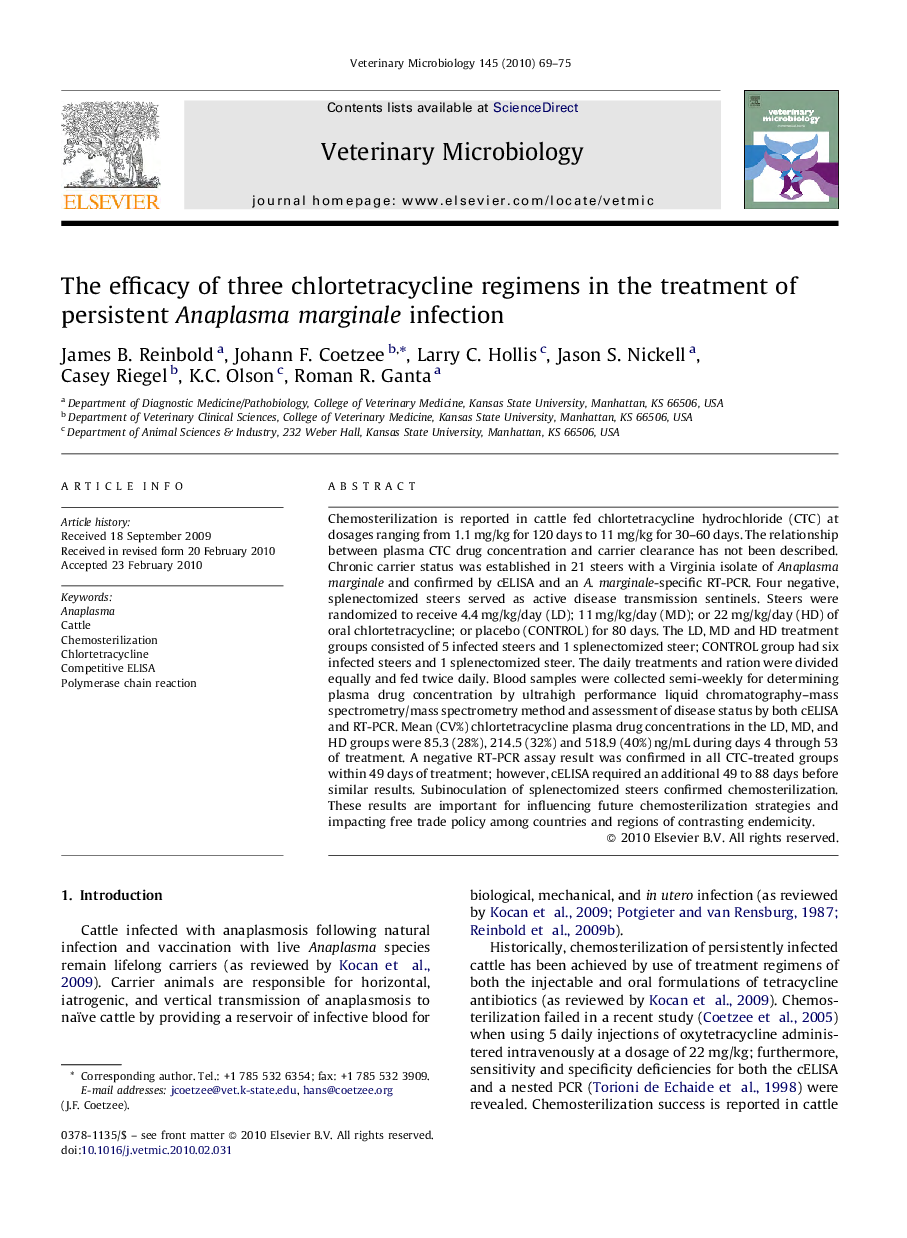| Article ID | Journal | Published Year | Pages | File Type |
|---|---|---|---|---|
| 2468072 | Veterinary Microbiology | 2010 | 7 Pages |
Chemosterilization is reported in cattle fed chlortetracycline hydrochloride (CTC) at dosages ranging from 1.1 mg/kg for 120 days to 11 mg/kg for 30–60 days. The relationship between plasma CTC drug concentration and carrier clearance has not been described. Chronic carrier status was established in 21 steers with a Virginia isolate of Anaplasma marginale and confirmed by cELISA and an A. marginale-specific RT-PCR. Four negative, splenectomized steers served as active disease transmission sentinels. Steers were randomized to receive 4.4 mg/kg/day (LD); 11 mg/kg/day (MD); or 22 mg/kg/day (HD) of oral chlortetracycline; or placebo (CONTROL) for 80 days. The LD, MD and HD treatment groups consisted of 5 infected steers and 1 splenectomized steer; CONTROL group had six infected steers and 1 splenectomized steer. The daily treatments and ration were divided equally and fed twice daily. Blood samples were collected semi-weekly for determining plasma drug concentration by ultrahigh performance liquid chromatography–mass spectrometry/mass spectrometry method and assessment of disease status by both cELISA and RT-PCR. Mean (CV%) chlortetracycline plasma drug concentrations in the LD, MD, and HD groups were 85.3 (28%), 214.5 (32%) and 518.9 (40%) ng/mL during days 4 through 53 of treatment. A negative RT-PCR assay result was confirmed in all CTC-treated groups within 49 days of treatment; however, cELISA required an additional 49 to 88 days before similar results. Subinoculation of splenectomized steers confirmed chemosterilization. These results are important for influencing future chemosterilization strategies and impacting free trade policy among countries and regions of contrasting endemicity.
